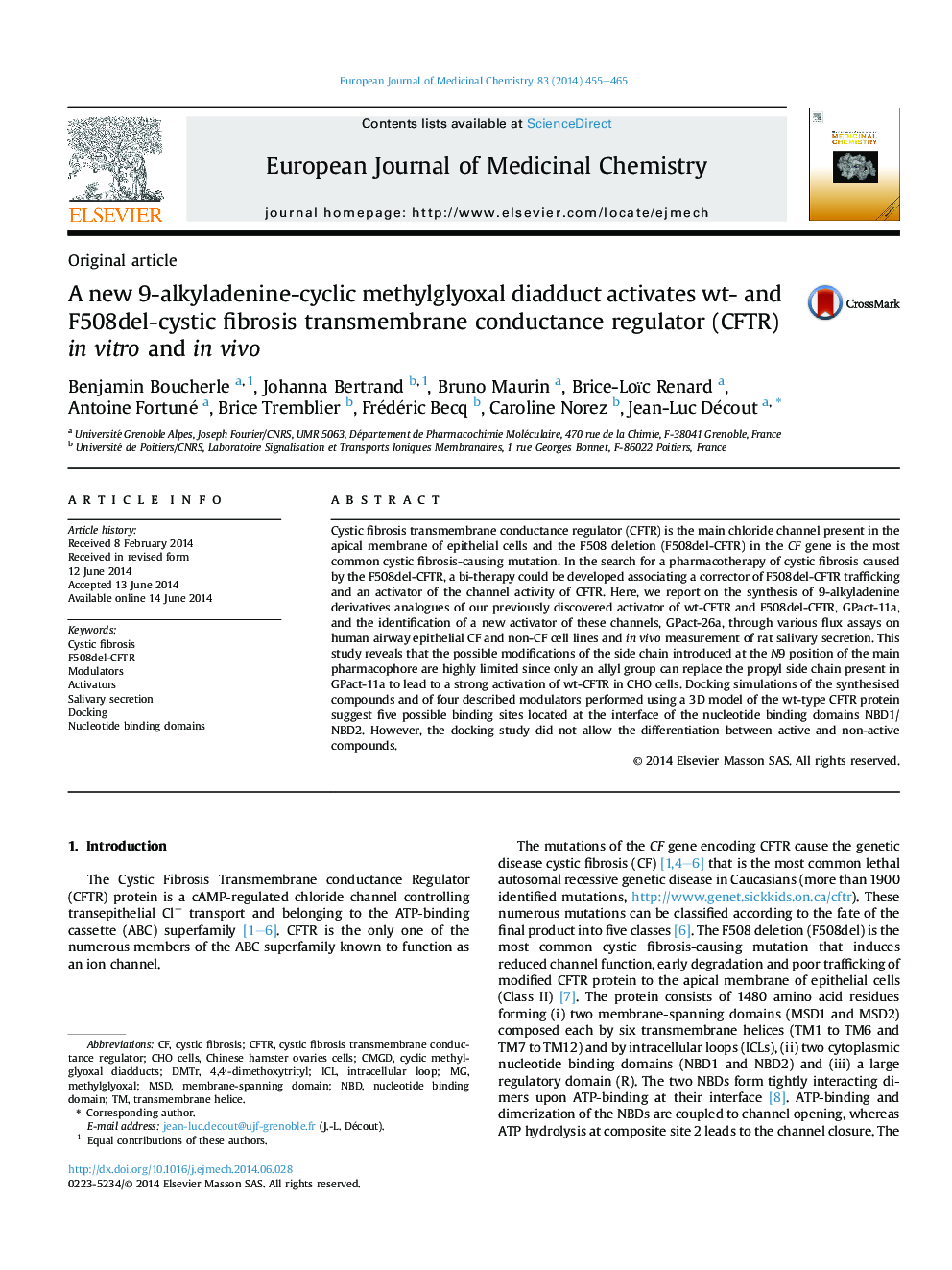| کد مقاله | کد نشریه | سال انتشار | مقاله انگلیسی | نسخه تمام متن |
|---|---|---|---|---|
| 1392445 | 1501133 | 2014 | 11 صفحه PDF | دانلود رایگان |

• A novel activator in vitro and in vivo of wt-type and F508-del CFTR chloride channels.
• Structure–activity relationships from a previously identified activator.
• Interest in the therapy of cystic fibrosis.
• Docking simulations using a 3D model of the wt-CFTR protein suggest five possible binding sites.
Cystic fibrosis transmembrane conductance regulator (CFTR) is the main chloride channel present in the apical membrane of epithelial cells and the F508 deletion (F508del-CFTR) in the CF gene is the most common cystic fibrosis-causing mutation. In the search for a pharmacotherapy of cystic fibrosis caused by the F508del-CFTR, a bi-therapy could be developed associating a corrector of F508del-CFTR trafficking and an activator of the channel activity of CFTR. Here, we report on the synthesis of 9-alkyladenine derivatives analogues of our previously discovered activator of wt-CFTR and F508del-CFTR, GPact-11a, and the identification of a new activator of these channels, GPact-26a, through various flux assays on human airway epithelial CF and non-CF cell lines and in vivo measurement of rat salivary secretion. This study reveals that the possible modifications of the side chain introduced at the N9 position of the main pharmacophore are highly limited since only an allyl group can replace the propyl side chain present in GPact-11a to lead to a strong activation of wt-CFTR in CHO cells. Docking simulations of the synthesised compounds and of four described modulators performed using a 3D model of the wt-type CFTR protein suggest five possible binding sites located at the interface of the nucleotide binding domains NBD1/NBD2. However, the docking study did not allow the differentiation between active and non-active compounds.
Figure optionsDownload as PowerPoint slide
Journal: European Journal of Medicinal Chemistry - Volume 83, 18 August 2014, Pages 455–465